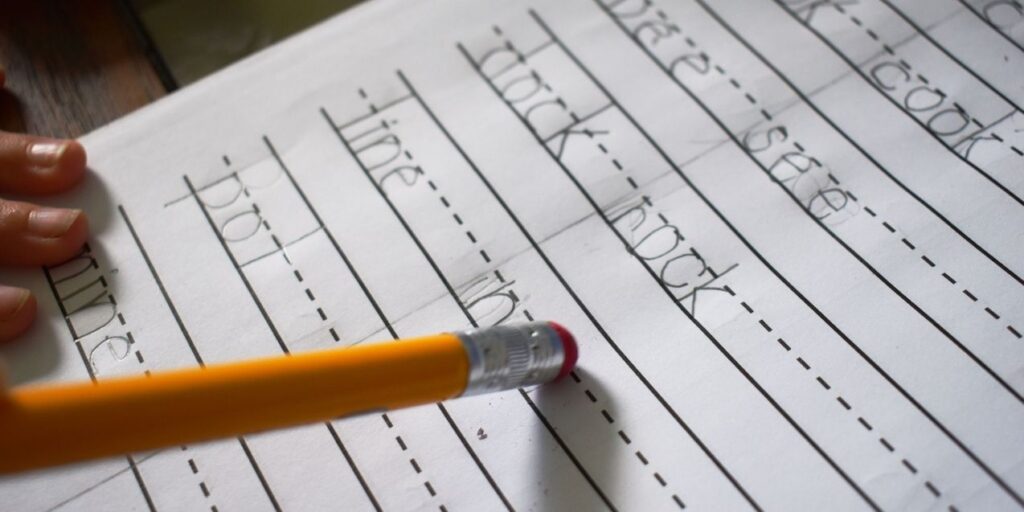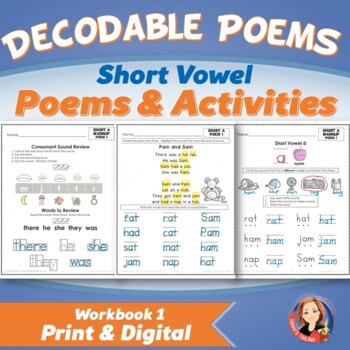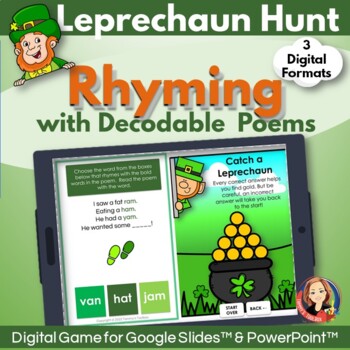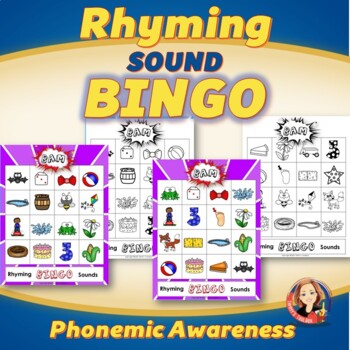HOW TO TEACH RHYMING TO STRUGGLING STUDENTS
Inside this post, you’ll learn how to teach rhyming to struggling and emergent readers with the latest strategies. Stop wasting time following out-of-date advice or myths, as it won’t get you the results you want in the classroom – stronger readers. Read this guide, you’ll learn everything you need to know about the science of rhyming, and you’ll know how to guide your struggling students with activities to help them.
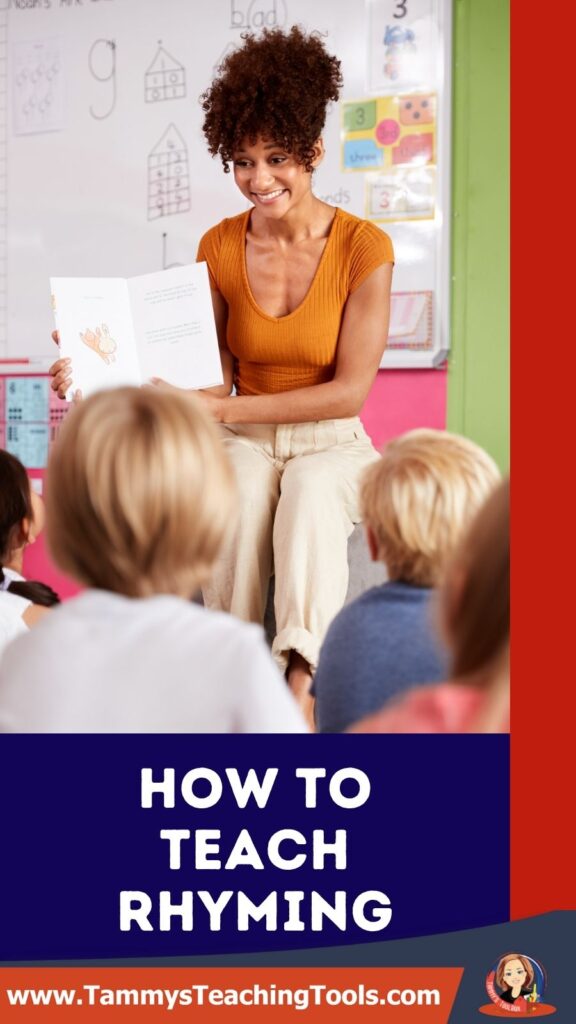
WHY RHYMING IS IMPORTANT
Rhyming is essential to developing literacy and reading skills because it teaches children about their language. Rhymes help children with phonemic awareness, which develops in a predictable progression.
Phonemic awareness is the ability to identify and use individual sounds in spoken words. This concept is important because it allows sequencing teaching tasks from easy to more challenging.
See more on phonemic awareness in this post: The Importance of Phonemic Awareness.
Rhyming is one of the best predictors of how easily a child will learn to read. This skill gives them a head start in learning to read and promotes language acquisition in many ways.
For example, children hear how vowels and consonants sound when listening to nursery rhymes and poetry. Rhymes demonstrate how to combine these sounds to form words. This skill also teaches appropriate pitch, cadence, voice inflection, rhythm, and volume.
Including rhyming text in your instruction is perfect for all ages.
➨ It helps with listening and concentration.
➨ It helps with the memorization of information.
➨ It exposes us to rich sounds and vocabulary.
➨ It allows readers to anticipate what is coming next.
 Using short, silly poems appeals to even reluctant readers. They are fun and engaging to read and do not overwhelm readers with long, difficult passages. The rhyme and repetition strengthen phonemic awareness and encourage fluent reading.
Using short, silly poems appeals to even reluctant readers. They are fun and engaging to read and do not overwhelm readers with long, difficult passages. The rhyme and repetition strengthen phonemic awareness and encourage fluent reading.
TIPS ON HOW TO TEACH RHYMING
How would you support a child who is struggling with rhyming words? There are three stages of rhyming: hearing, recognizing, producing. Here are some ideas for moving through these stages.
➨ Don’t forget to teach what a rhyme is.
I had students who did not know what I meant when I said “rhyme.”
➨ Read picture books together that have rhyme.
➨ Most children also love to sing and recite nursery rhymes.
➨ Rhyming skills need lots of practice and exposure.
➨ Play games and use multiple activities that encourage recognizing and matching rhyming words.
➨ Keep your rhyming practice fun and laid back for young children and students struggling with this concept.
➨ Use decodable poems at the appropriate level that do not frustrate young learners.
➨ After hearing and recognizing rhyming words, let children develop their own words, poetry, and stories.
BOOKS AND ACTIVITIES TO TEACH RHYMING
According to https://www.understood.org/ some of the best books to teach this skill include: (This post contains affiliate links.)
Jake Bakes Cakes
Sheep in a Jeep
There’s a Wocket in my Pocket
Chicka Chicka Boom Boom
There are many, many great children’s books that use rhyme. Encourage children to write their own rhyming poems or stories. You will love the results.
FUN RHYMING ACTIVITIES
➨ Rhyme game: Say a few words that rhyme, “cat, fat, bat”. Prompt children to join in the game. You may need to prompt by saying some initial sounds: /p/ – at, /s/ – at, etc. Include silly words (/z/ – at) and blends (/th/ – at)! This can easily be done while waiting in line during a transition.
➨ Find a series to demonstrate rhyming verses in all the text. It will help children discriminate and learn about rhymes.
➨ Rhymes can be taught in a fun, playful way in many songs. One example is “Rhyming Riddles.” Songs on this music album include verses with rhyming words and areas for students to fill in the blank! How fun!
➨ If you have struggling readers with low confidence, this set of short, decodable rhyming poems will allow them to read with success. Each poem has practice sheets that include 5 areas of essential reading instruction: phonemic awareness, phonics, vocabulary, fluency, and comprehension. Plus, they are silly, engaging, and help instill a love for wordplay!
➨ Check out these fun games.
NOW WHAT?
Now it’s time to put all my advice into action. You’ve just learned some of the most updated tips and strategies I have for how to teach rhyming to young or struggling readers. Now it’s time to rhyme!
Don’t forget to leave a comment below to share your experiences. I read and reply to every single one and LOVE to hear from my visitors.
Happy Rhyming,

P.S. You can get some free rhyming activities in my Resource Library. Sign up here.


